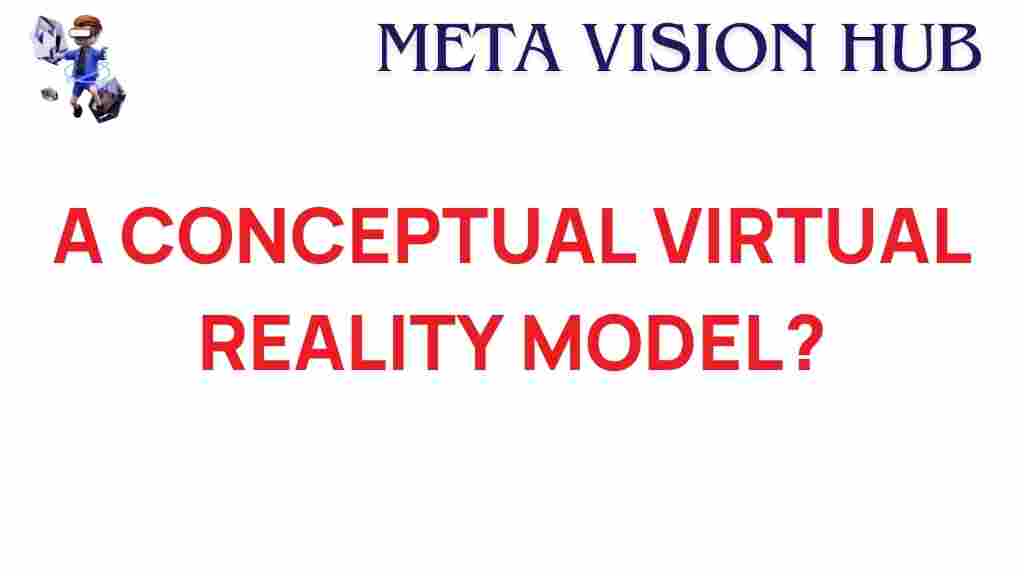As technology continues to evolve, *virtual reality* (VR) emerges as one of the most transformative innovations shaping the future. Beyond gaming and entertainment, VR’s potential lies in its ability to redefine how humans interact, communicate, and experience the world. This article delves into a conceptual virtual reality model that promises to revolutionize industries and everyday life.
What is Virtual Reality?
*Virtual reality* is an immersive technology that creates a simulated environment, enabling users to interact with 3D spaces in real time. By leveraging advanced sensors, headsets, and software, VR delivers an unparalleled experience that feels remarkably real. From training simulations to virtual tourism, its applications are vast and continually expanding.
The Conceptual Virtual Reality Model
Overview of the Model
At the heart of the conceptual virtual reality model is an enhanced framework designed to address current limitations while introducing groundbreaking features. This model integrates artificial intelligence, blockchain technology, and haptic feedback to create a more secure, intuitive, and immersive VR ecosystem.
Key Components of the Model
- AI-Powered Personalization: Tailors experiences to individual preferences and behaviors.
- Blockchain Security: Ensures data integrity and secure transactions in virtual environments.
- Enhanced Haptics: Provides tactile feedback for a more realistic interaction.
- Cloud Integration: Enables seamless connectivity and reduced hardware dependency.
How to Build a Conceptual Virtual Reality Model
Step 1: Define Objectives
Before diving into development, it is crucial to outline the purpose of your virtual reality project. Are you designing for education, entertainment, or healthcare? Clear objectives guide the technological requirements and user experience.
Step 2: Choose the Right Technology
Selecting the appropriate hardware and software is essential. Invest in high-resolution VR headsets, motion sensors, and robust software development kits (SDKs) to create a lifelike experience.
Step 3: Develop Immersive Environments
Using 3D modeling and VR programming tools, build detailed environments that align with your objectives. Platforms like Unity and Unreal Engine offer extensive libraries and tools to streamline the process.
Step 4: Integrate Feedback Mechanisms
To enhance user interaction, incorporate feedback mechanisms such as haptic gloves, motion trackers, or voice recognition systems.
Step 5: Test and Optimize
Testing is crucial to identifying bugs and refining the user experience. Use feedback from test users to improve functionality and address potential shortcomings.
Troubleshooting Common Challenges in Virtual Reality Development
Developing a conceptual virtual reality model comes with its challenges. Below are some common issues and solutions:
- Lag and Latency: Minimize latency by optimizing software code and ensuring high-speed hardware.
- Compatibility Issues: Ensure that your VR content is compatible across multiple devices and platforms.
- User Discomfort: Address motion sickness by fine-tuning frame rates and motion dynamics.
- High Costs: Leverage cloud-based solutions to reduce hardware investments and operational expenses.
Exploring the Potential of Virtual Reality
The conceptual virtual reality model opens the door to countless applications, including:
- Education: Immersive learning environments for students and professionals.
- Healthcare: Virtual simulations for surgery training and mental health therapies.
- Real Estate: Virtual tours for property buyers and developers.
- Social Interaction: VR platforms that enable friends and family to connect in shared virtual spaces.
For more examples, explore our detailed guide on innovative VR applications.
Conclusion
The conceptual virtual reality model represents a bold step into the future, offering unparalleled opportunities for innovation and interaction. By addressing current limitations and integrating emerging technologies, this model sets the stage for a more immersive and inclusive digital world.
Ready to learn more? Discover how leading VR pioneers are shaping the next era of immersive technology.
This article is in the category ImmersiveTech and created by MetaVisionHub Team
